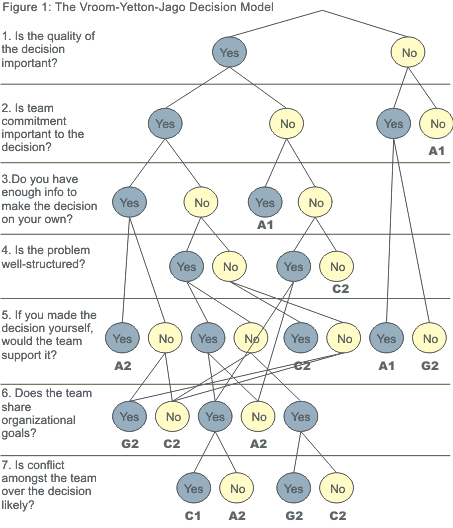In the last byte, we were discussing about path-goal theory. In today’s byte, we begin looking at Vroom-Yetton-Jago Normative Decision Model.
The Vroom-Yetton-Jago Normative Decision Model helps leaders and managers known use employees participating in decision making process. This model helps recognize appropriate decision making strategy to use.
Following are the decision making described in the model:
- Decide: The manager makes the decision alone either announces it or “sells” it to the group
- Consult Individually: The manager presents the problem to the group members individually, gets their inputs, and then makes the decision
- Consult Group: The manager presents the problem to the group members in meeting, gets their inputs, and then makes the decision
- Facilitate: The manager presents the problem to the group in meeting and acts as a facilitator, defining the problem and the boundaries that surround the decision. The manager’s ideas are not given more weight than any other group member’s ideas. The objective in this approach is really concurrence.
- Delegate: The manager permits the group to make the decision within the prescribed limits, providing needed resources and encouragement.
(Points from reference book)
